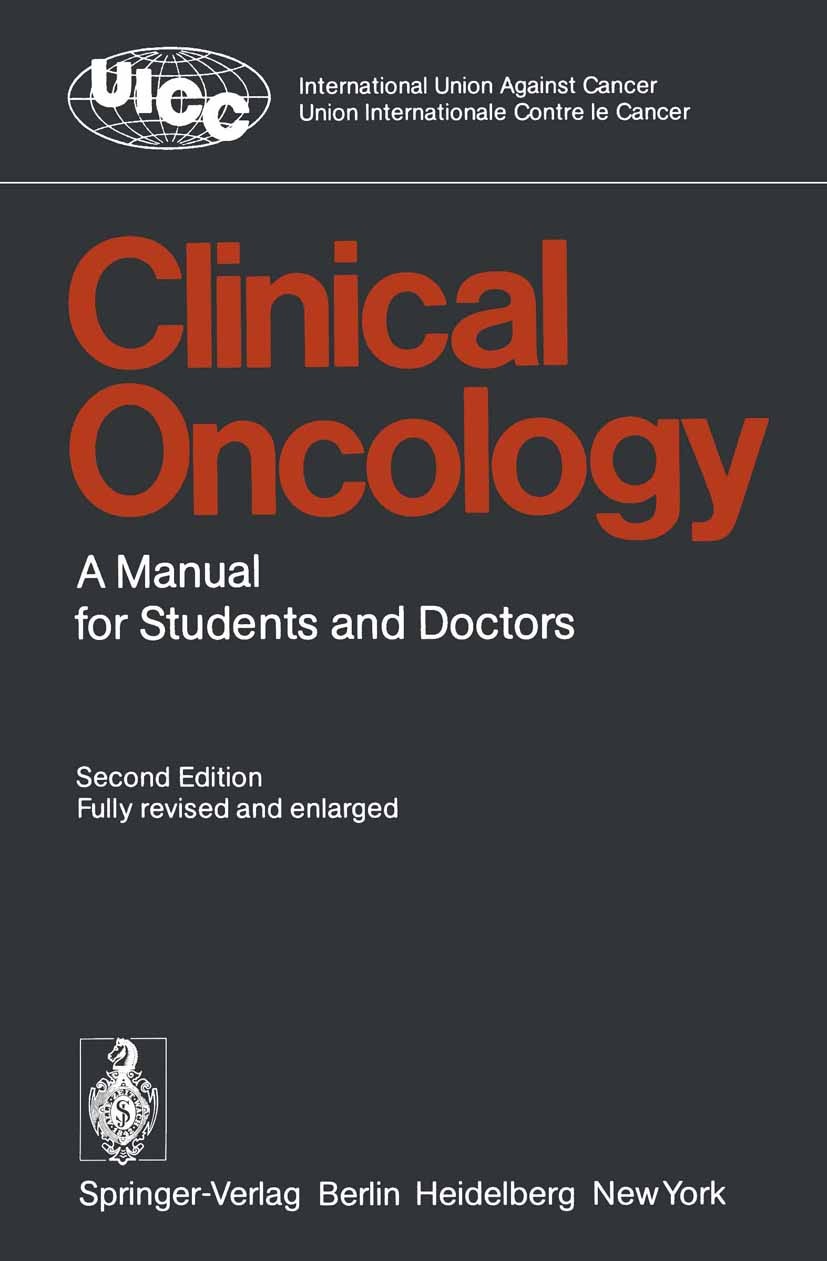| 书目名称 | Clinical Oncology | | 副标题 | A Manual for Student | | 编辑 | International Union Against Cancer | | 视频video | http://file.papertrans.cn/229/228124/228124.mp4 | | 丛书名称 | UICC International Union Against Cancer | | 图书封面 |  | | 描述 | The outstanding success of the First Edition and the expansion of our knowledge about cancer over the 5 years since its publication have led to the decision to publish a Second Edition which has been fully revised, rewritten and enlarged by the addition of several sections. The First Edition was translated into Italian, Japanese, Polish, and Serbo-Croat and it is expected that additional translations (French, German, Spanish, Portuguese, etc. ) will make this Second Edition a truly international basic cancer Manual. The Revision Committee is convinced that all students and general physicians should know: (a) the important basic aspects of cancer; (b) some details of the most common cancers; and ( c) a few important points about the less common cancers. An attempt has been made to strengthen Part I, General Aspects, which is considered to be the most important part of the Manual for the world‘s physicians. However, the most common cancers in one part of the world are not necessarily the same in other parts and it is planned to work with local groups to produce adaptations and translations as seem appropriate. In particular, the UICC is anxious to work with local, national, and inter | | 出版日期 | Textbook 19782nd edition | | 关键词 | Chirurgie; Geschwulst; Innere Medizin; Krebs; Oncology; Onkologie; cancer; diagnosis; therapy; tumor | | 版次 | 2 | | doi | https://doi.org/10.1007/978-3-642-96472-5 | | isbn_softcover | 978-3-540-08868-4 | | isbn_ebook | 978-3-642-96472-5 | | copyright | Springer-Verlag Berlin Heidelberg 1978 |
The information of publication is updating

|
|
 |Archiver|手机版|小黑屋|
派博传思国际
( 京公网安备110108008328)
GMT+8, 2025-11-12 07:42
|Archiver|手机版|小黑屋|
派博传思国际
( 京公网安备110108008328)
GMT+8, 2025-11-12 07:42


